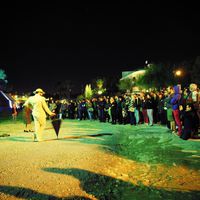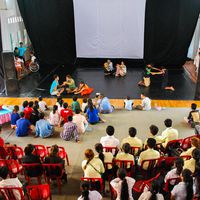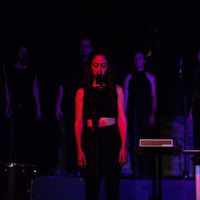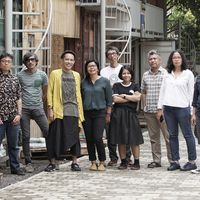Getting creative at home: Re-storying neuro-diversity
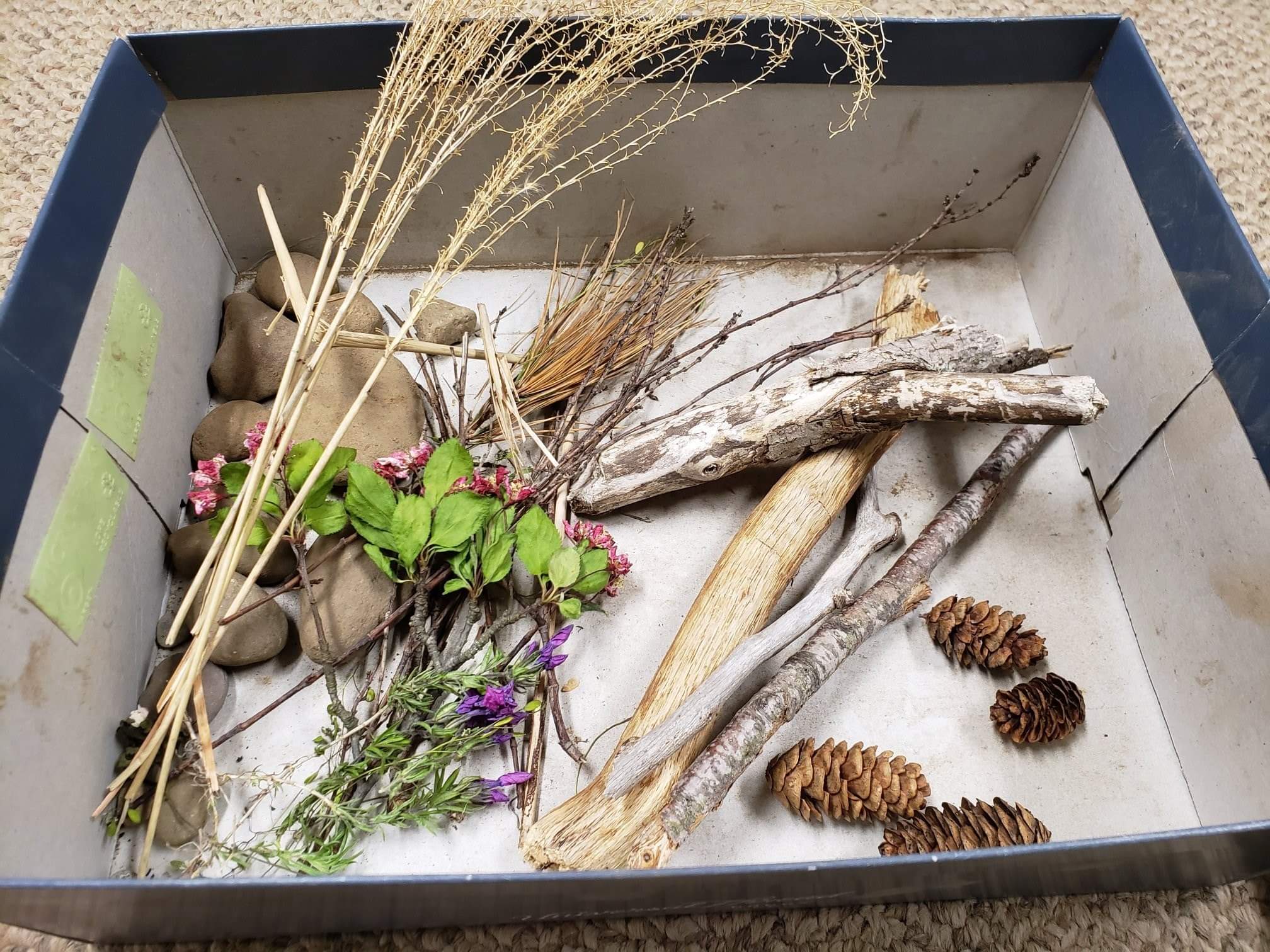
This month, culture360 will launch a series articles on how the arts are adapting to the "New Normal. Well over 10 months into the global pandemic, this series will present experiences and stories of resilience, adaptation, and success from the arts sector to the Covid-19 pandemic, with particular focus on arts and disabilities, artists residencies and arts funding. The first article in the series written by Christos Pavlakis is a case study of a community-led association, Community Action, active in Athens, Greece and how it has managed to keep supporting people with neuro-diverse paths during the difficult months of the pandemic.
Neuro-atypical people, a long-recognized form of disability, have long been experts at staying at home and getting creative with new ways to stay in community with one another. At the beginning of the COVID-19 lockdown, many of us were wondering how we could maintain the sense of intimacy and connection that we get from creative and arts spaces.
There has been remarkable progress over the last decade toward the removal of legal barriers to equity and accessibility. Freedom from constraints is necessary, but insufficient. Freedom requires space to live, opportunity to learn, a healthy mind and body; our freedom requires each other on- and off-line. Our peer support group, Community Action, has been testing ways to build digital, creative and physical spaces in which we can put our neuro-diverse freedom into practice, and ways to use the proceeds to re-invest into building real community; a group of people who support each other to be all that they could be.
Community Action is a peer support group of persons who follow a neuro-diverse path. Our members live in the wider Athens area, in Greece. We describe ourselves as a mixed group, be it age-wise or ethnically. We have members from minority communities, members who identify themselves as males, females and non-binaries. What we do have in common is a difficult mental journey in life that bonds us to stick together and offer help to each other.
It all began with 3 people who met in a digital storytelling workshop about mental health run by an academic institution. We decided to stay in touch, and we used to meet regularly for peer to peer support. Whether in public libraries, community centres or public gardens, the company of peers sharing about their mental health journey offered comfort. As our group kept growing, some of us volunteered to organise a film screening evening or a self-help book club or teach a tai chi lesson for calming down.
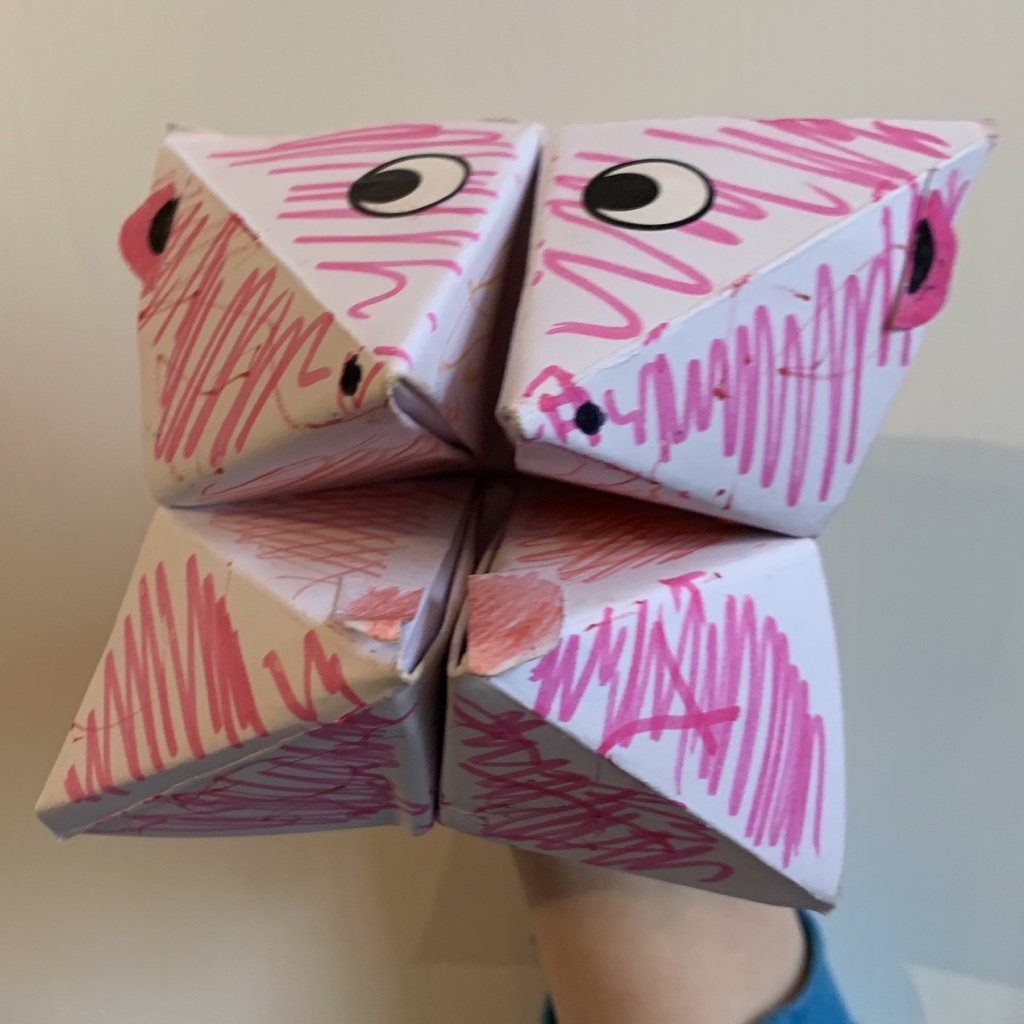
Photo: Something with a face scavenger hunt
During the lockdown months, we were deemed as vulnerable and we suffered disproportionately from self-isolation. We really missed the spaces of connection and conversation that happen organically and spontaneously in creative and arts spaces, which have been closed for most part of 2020. In a bold move, we organised ourselves to replicate those chats, giving ourselves an accessible space to get creative at home, converse, connect, and just be, however we needed and wanted.
This implied that we let an entirely postal creative project take off. This happened because some of our members were not engaging with technology or had quickly become fed up with it.
'A letter delivered in your home creates such joy!' said one of our members with joy.
On 7 occasions between May and June 2020, I, in the capacity of co-ordinator of the group, sent out 35 envelopes containing poetry and creative reads to members. Each week, I suggested a theme (for example: the art of healing, the tree of life, I am ... a poem) with an invitation to respond in an open and creative way, along with a stamped addressed envelope to facilitate a reply.
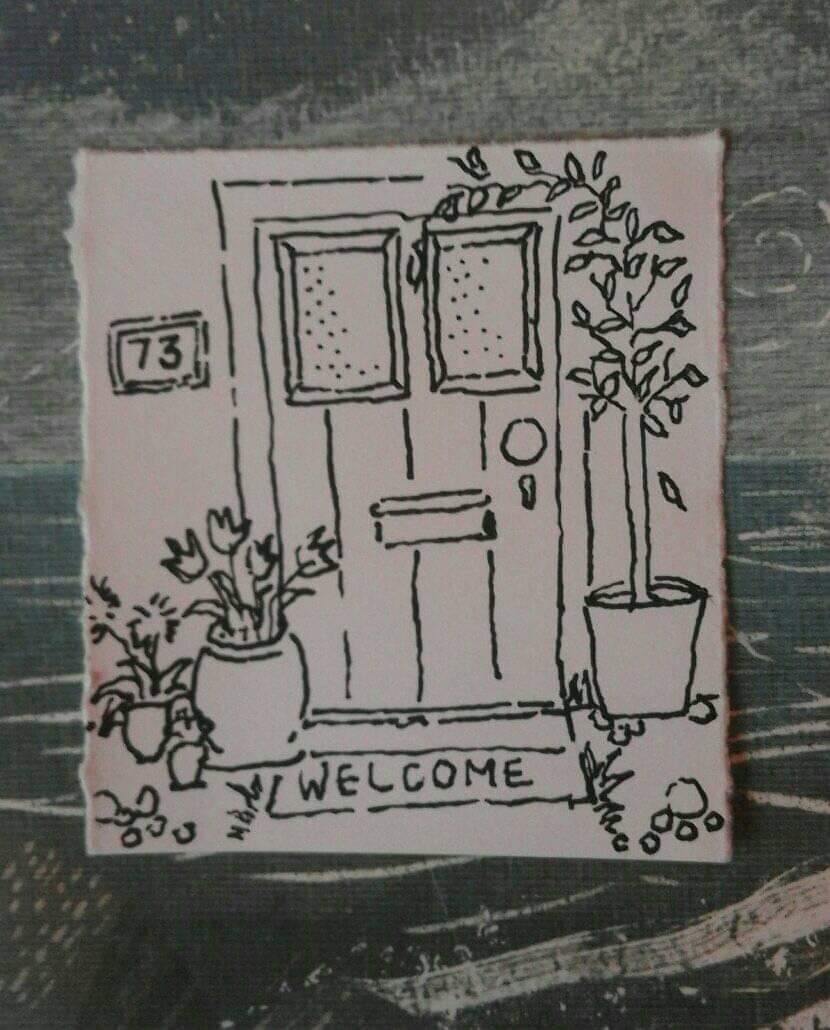
Photo: My home is
It was delightful to see the creative, colourful, hopeful response from all our members – all our members took part at least once. A WhatsApp group was soon created as a supplementary medium for these creative exchanges and for making new suggestions for themes. This increased the engagement level dramatically and helped unleash the creative self in each one of us.
The project has had an 'overwhelmingly positive' effect on our members, and we have grown tremendously during this journey. Our most beautiful output has been the collective poem 'We are...' created in the final round of these postal exchanges.
When the restrictions for social gatherings were lifted, we went to the National Garden for the first meet-up. Walking along, we recalled the best moments of our creative exchanges and performed collectively our group poem...and sometimes, we dreamed a better world could be possible.
Despite the bleakness around us, we managed to remain connected and remainhopeful in the power of people and communities to become stronger and re-imagine, like our group, other ways to care.
Why the current practices are not effectively supporting people facing complex disadvantages:
• Disabled, amongst which neuro-diverse people are seen primarily as ‘benefit claimants’ and ‘needy’ & their relationship with the system has a fundamental power imbalance.
• Traditional, top-down approaches & assumptions turn out to narrow the scope of delivery in terms of digital services or training programmes;
• Even if support was improved, the lack of trust in the system means disabled people may not engage.
Our small-scale initiative suggests a community-led approach as response:
• Treating people as people;
• Starting with people’s strengths;
• Empowering people to make their own choices;
• Support based on what people need, including but not limited to financial, emotional and technical support;
• Starting where trust already exists.
We hope that this creative practice will provide inspiration for others working on these issues and encourage them to call for a more radical overhaul of the current approach around technology and disabled people.
We want to see a more expansive debate that is less constrained by the parameters of the current top-down system and more open to a community-led approach. 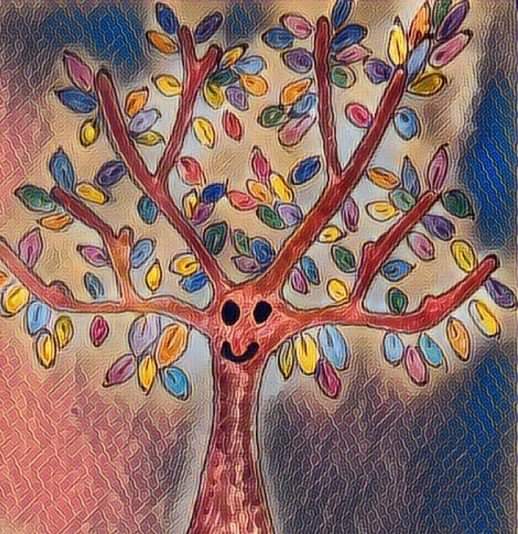
Photo: My life tree
We want to encourage more collaboration between those individuals and organisations who recognise the need for an overhaul of the current approach and want to build a more accessible and fairer future.
Viewing accessibility as a human right, is critical for building resilience for particularly vulnerable groups (whatever the level of vulnerability is) and for the long-term sustainability of any community or organisation. It is paramount to achieve inclusion.
About the author
I am a community artist exploring the nexus between arts and well-being and how the latter can be achieved by way of participatory arts. My work is community-driven operating in an expanded field that includes performance, installation, participatory public art, drawing, digital media and writing. While works are diverse in range, they have in common a close working with attention and perception and a concern with the actuality of things and of situations.
Cover photo title: A box of calming things

